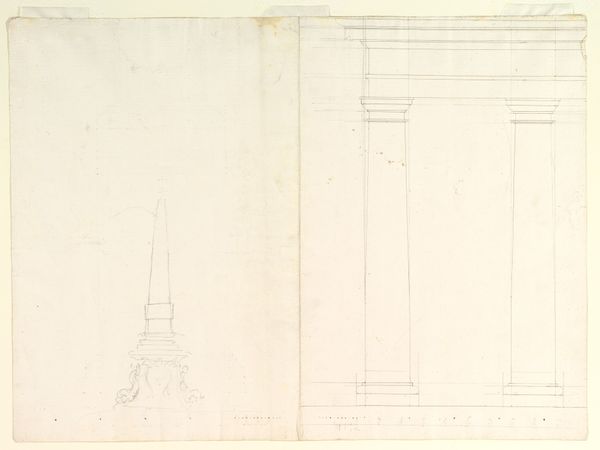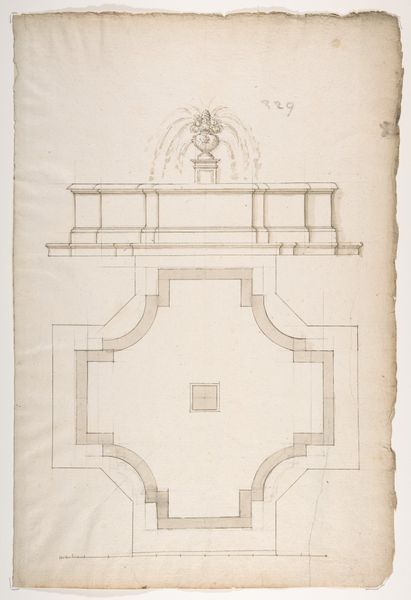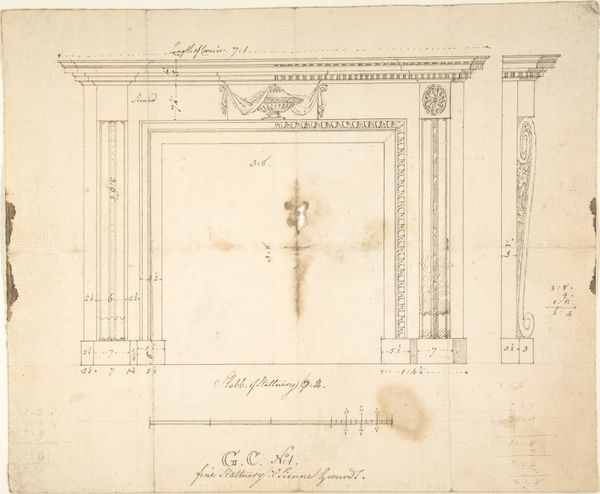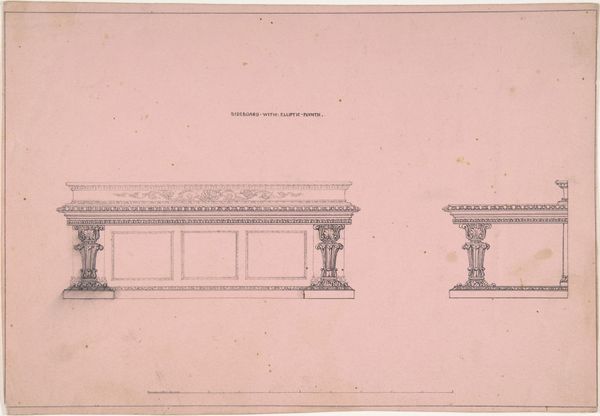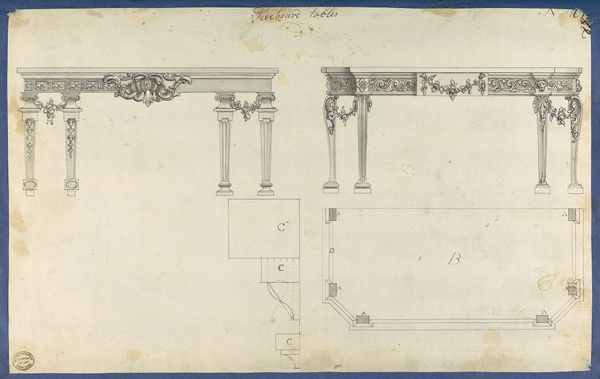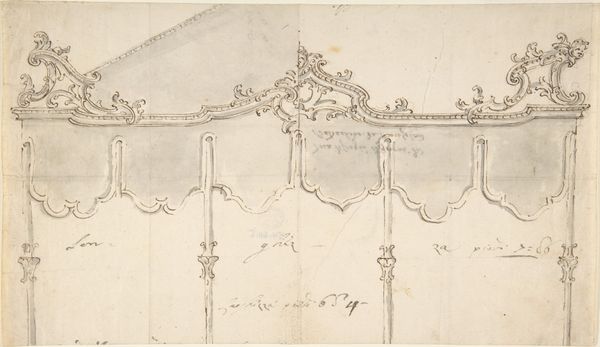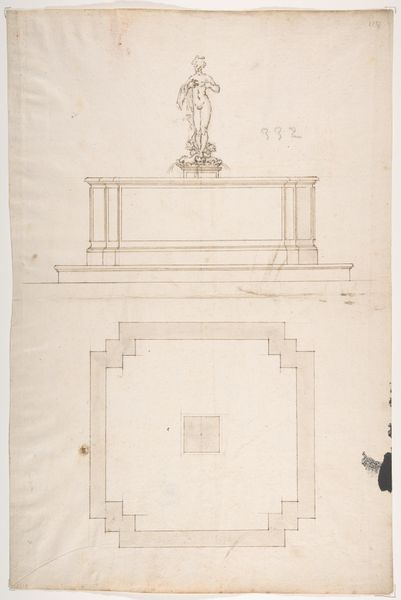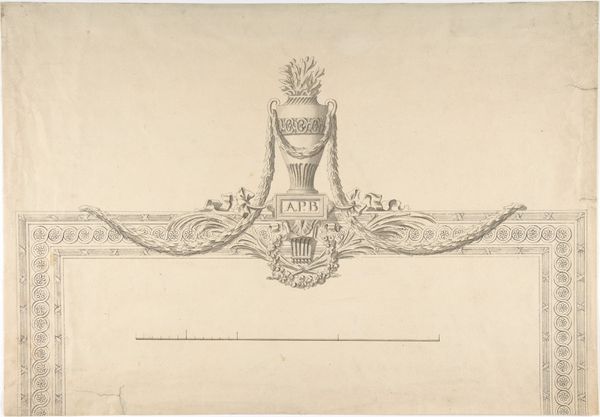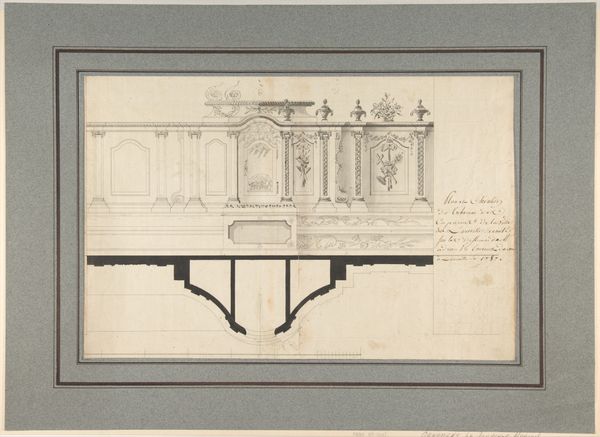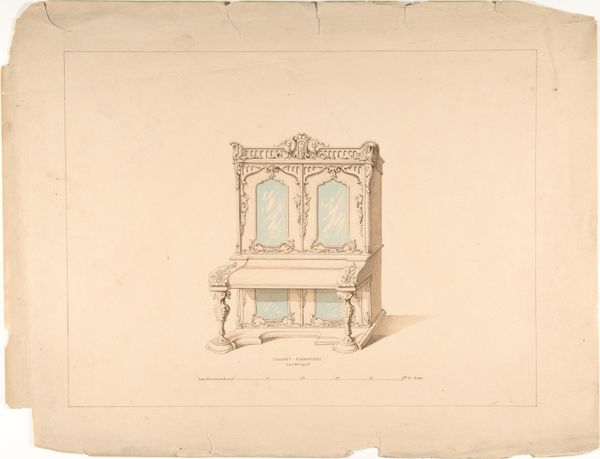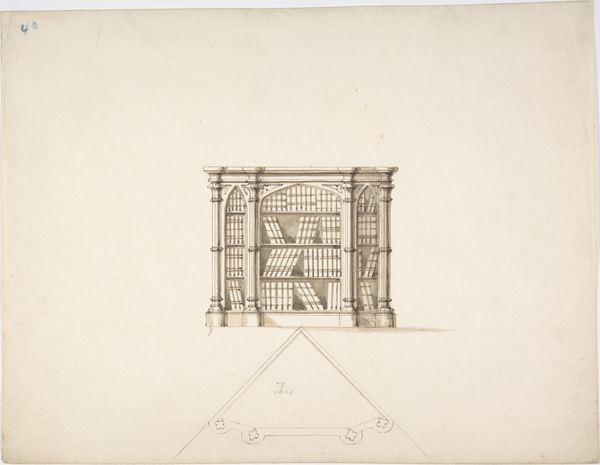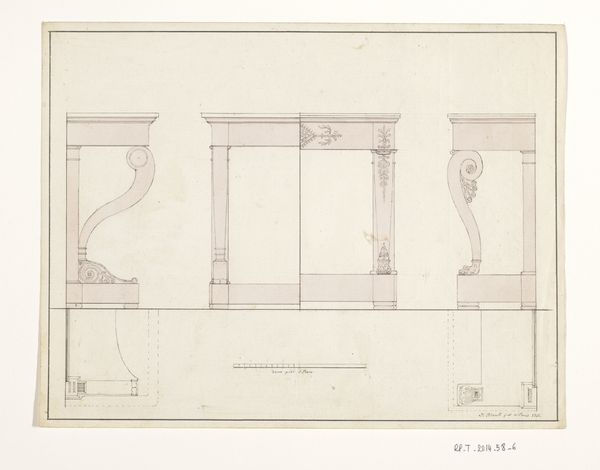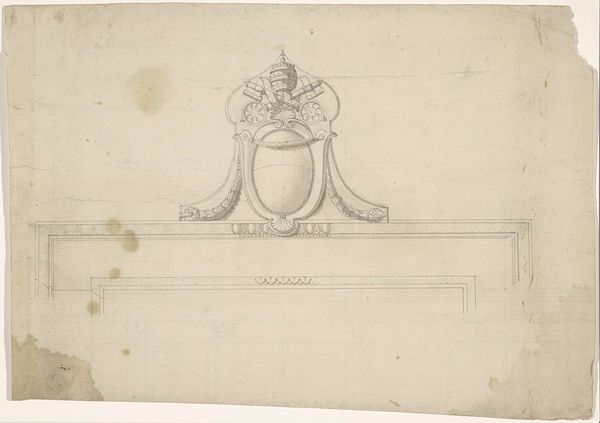
drawing, print, etching, paper, pencil
#
drawing
# print
#
etching
#
etching
#
paper
#
geometric
#
pencil
Copyright: Public Domain
Robert William Hume designed this Loo-Table, but the drawing on paper is only the first step. A piece like this would have been made by many hands. Hume may have been responsible for the overall design, but skilled cabinetmakers would have been needed to execute its elaborate form, including the carved pedestal. This division of labor was a key element in nineteenth-century furniture production, enabling workshops to increase output and meet consumer demand. Consider the material qualities suggested by the drawing. The weight of the solid wood, balanced by the elegance of the curvilinear ornament. The social significance here is clear: this table was intended for a prosperous household, where it would serve as a site of leisure and display. The very term "loo-table" speaks to its intended use for playing the card game of "loo," a popular pastime among the upper classes. By recognizing the many kinds of work and social relationships embedded in this design, we can move beyond the traditional categories of art history and appreciate the craftsmanship, production, and consumption of decorative arts.
Comments
No comments
Be the first to comment and join the conversation on the ultimate creative platform.
